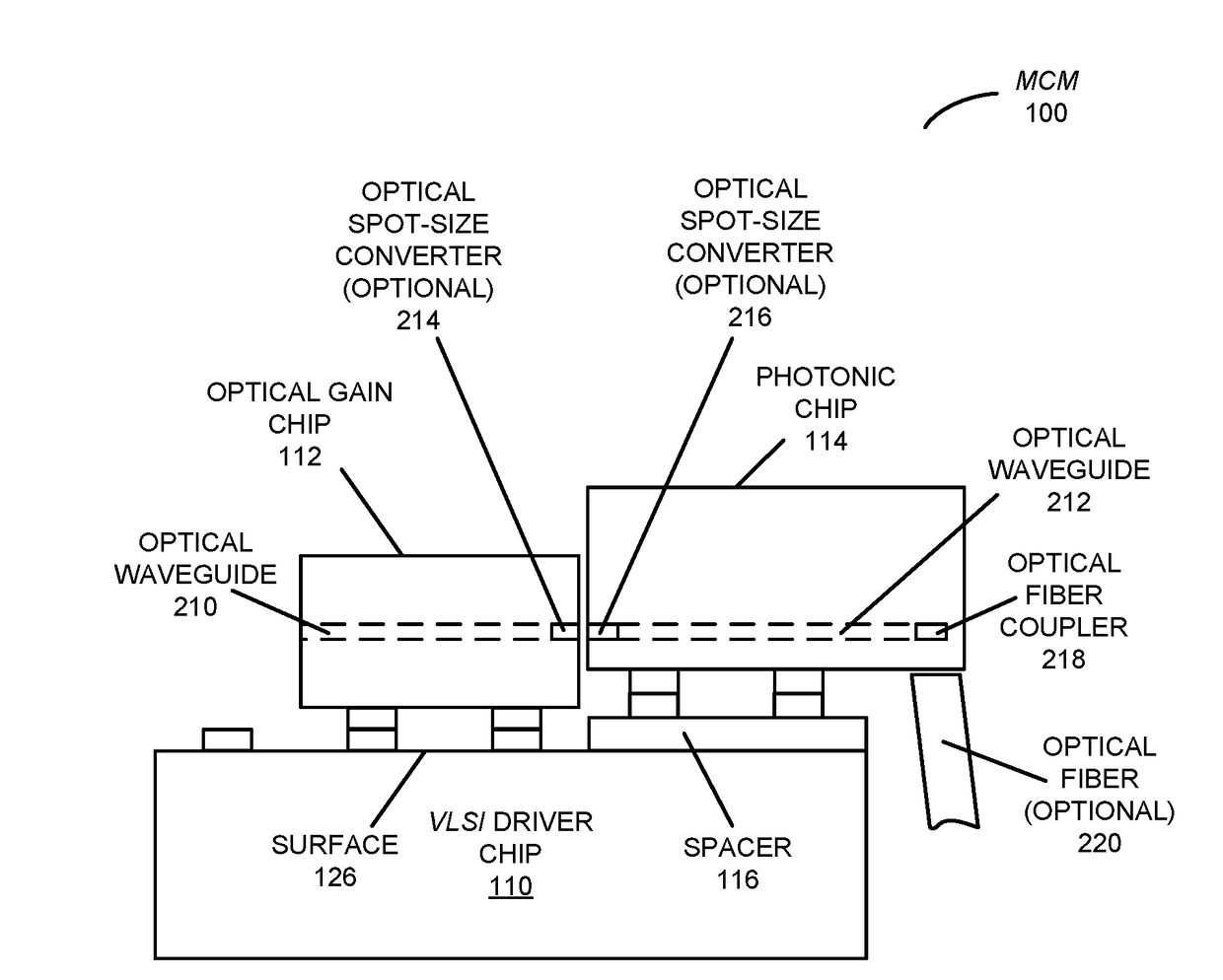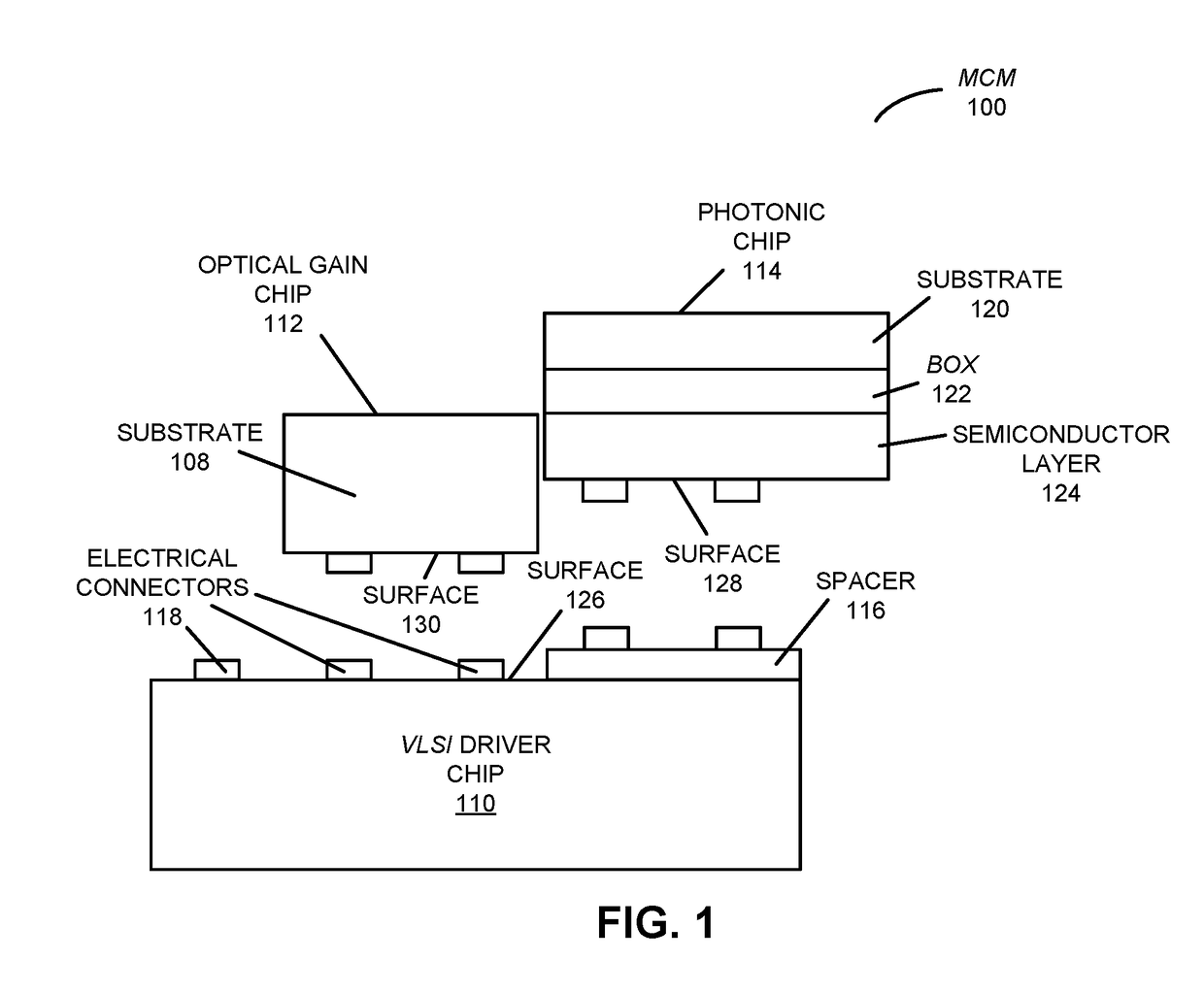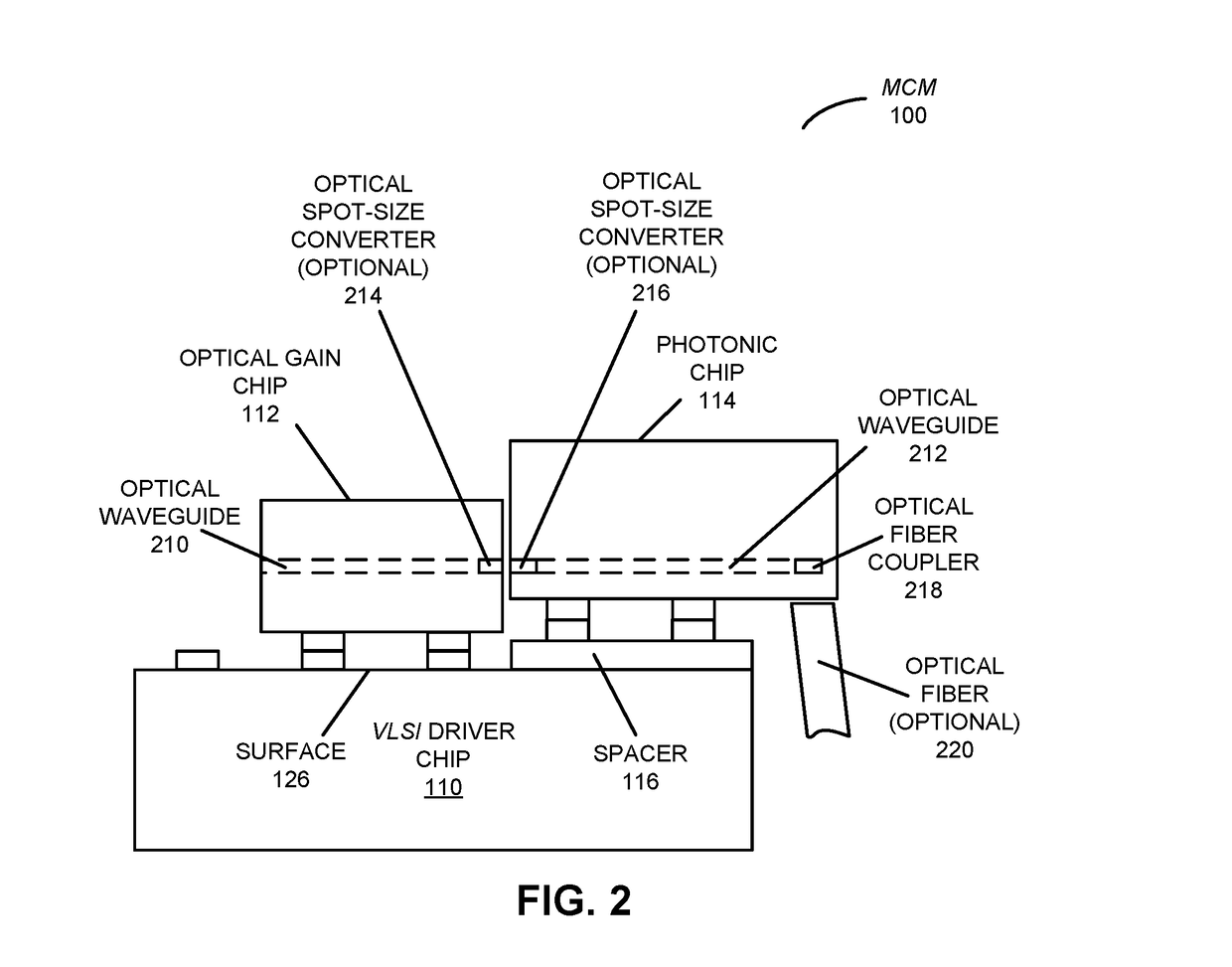Hybrid-integrated multi-chip module
a multi-chip module and hybrid technology, applied in the field of multi-chip modules, can solve the problems of difficult to achieve electrically pumped room-temperature continuous-wave (cw) laser in silicon, silicon is usually a poor material for light emission, and light sources on silicon remain a substantial technological challeng
- Summary
- Abstract
- Description
- Claims
- Application Information
AI Technical Summary
Benefits of technology
Problems solved by technology
Method used
Image
Examples
Embodiment Construction
[0035]Embodiments of a multi-chip module (MCM), a system that includes the MCM, and a technique for outputting an optical signal using the MCM are described. This MCM includes a driver integrated circuit that includes electrical circuits, a photonic chip, an interposer, and an optical gain chip. The photonic chip may be implemented using a silicon-on-insulator (SOI) technology, and may include an optical waveguide that conveys an optical signal and traces that are electrically coupled to the driver integrated circuit. Moreover, the interposer may be electrically coupled to the traces. Furthermore, the optical gain chip may include a III / V compound semiconductor (and, more generally, a semiconductor other than silicon), and may include a second optical waveguide that conveys the optical signal and that is vertically aligned with the optical waveguide relative to a top surface of the interposer. Additionally, the optical gain chip may be electrically coupled to the interposer.
[0036]In...
PUM
 Login to View More
Login to View More Abstract
Description
Claims
Application Information
 Login to View More
Login to View More - R&D
- Intellectual Property
- Life Sciences
- Materials
- Tech Scout
- Unparalleled Data Quality
- Higher Quality Content
- 60% Fewer Hallucinations
Browse by: Latest US Patents, China's latest patents, Technical Efficacy Thesaurus, Application Domain, Technology Topic, Popular Technical Reports.
© 2025 PatSnap. All rights reserved.Legal|Privacy policy|Modern Slavery Act Transparency Statement|Sitemap|About US| Contact US: help@patsnap.com



